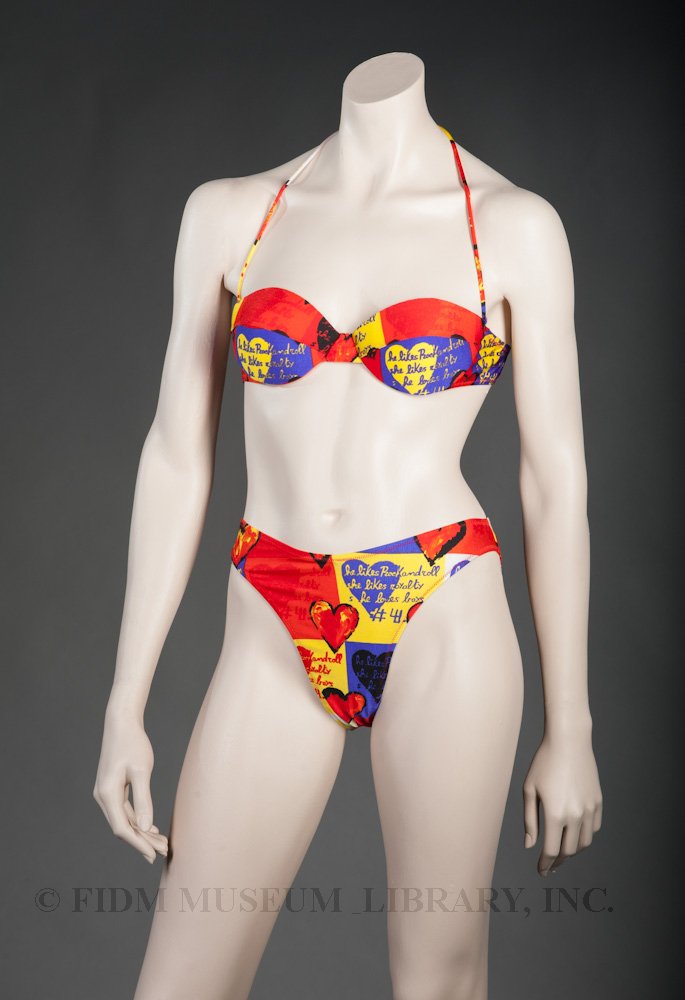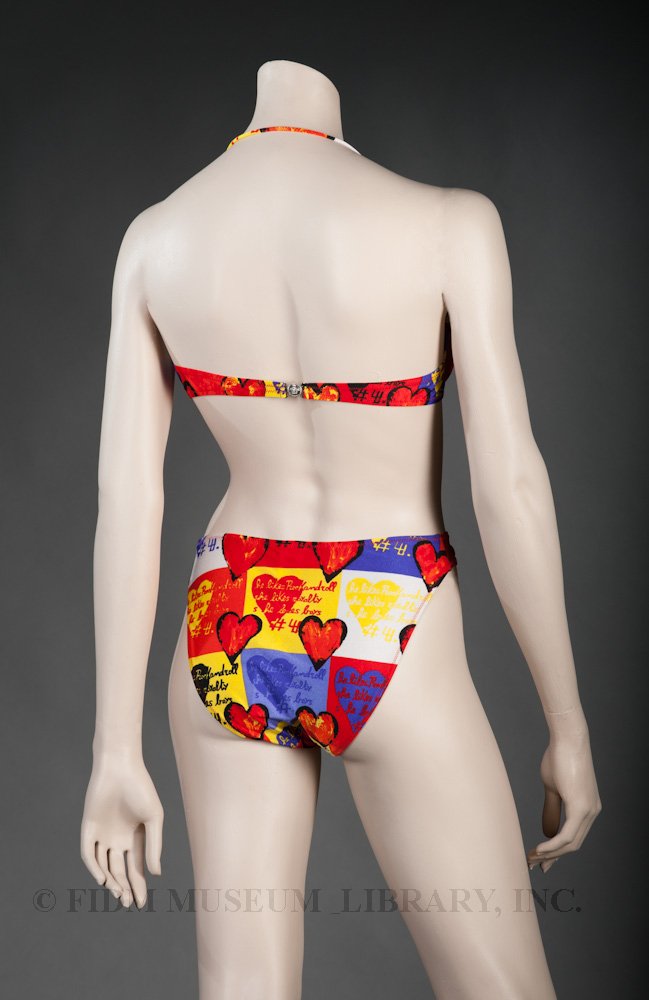According to the inimitable fashion editor and curator Diana Vreeland, a bikini reveals "everything about a girl except her mother's maiden name."1 As Vreeland noted, bikinis are defined by their scant coverage and are rarely more than a few triangles of fabric stitched or strung together. Though the bikini is now a widely accepted type of swim and beachwear, it took years for the bikini to go from scandalous to unremarkable. Bikinis, or bikini-like garments, appear in ancient Roman murals, and relatively modest two-piece suits were worn in the 1930s, but the scanty modern bikini didn't appear until 1946. Sources differ, but it seems that the revealing swimsuit was introduced almost simultaneously in summer 1946 by haute couture designer Jacques Heim and engineer/fashion designer Louis Réard. Heim called his scanty two-piece suit the atome, while Réard labeled his the bikini. Both names made reference to the US military's July 1946 nuclear tests on Bikini Atoll, a low-laying island located in the South Pacific. Réard's name for the revealing swimsuit stuck, and a new style of swimwear was born.
 Bikini
Bikini
Gianni Versace/Versace Mare
c. 1994-1999
Gift of Dorothy Washington Sorensen
S2010.1110.83A-D
Though bikinis were spotted on the French Riviera as early as 1947, it wasn't until the late 1950s that bikinis began to gain widespread public acceptance in the United States. As described in the 1960 song "Itsy Bitsy Teenie Weenie Yellow Polka Dot Bikini," many women were reluctant to display their bikini-clad bodies in public. "Splashy Suits to Swim In," a 1959 editorial in Life magazine,
noted that bikinis were slowly becoming more popular, particularly in parts of
the country where private pools allowed women "to sport a bikini in solitude."2 As the 1960s progressed, the decade's emphasis on youth culture and experimentation gradually pushed the bikini to center stage.
By the time Gianni Versace designed this colorful bikini, the body-baring bikini swimsuit was well-established. In many of his designs, Versace explored the tension between revealing and concealing the body, a tension inherent in the bikini. With its vibrant pattern and revealing cut, this Versace Mare bikini is made for an extrovert, someone who wouldn't mind attracting the gaze of others.
The structured top and high-cut bottoms are printed with a multi-colored, pop-art inspired pattern of hearts, squares, and cursive text. Possibly lyrics to a song, the text reads: "he likes Rock and roll, she likes royalty, she loves boys." The top fastens with a silvertone clasp stamped with a Medusa design, an image that Versace used repeatedly on his buttons and other fasteners.
1 Quoted in Webber-Hanchett, Tiffany. "Bikini" Encyclopedia of Clothing and Fashion Ed. Valerie Steele. Vol. 1. Detroit: Charles Scribner's Sons, 2005: 156.
2 "Splashy Suits to Swim In," Life (May 25, 1959) 58.


